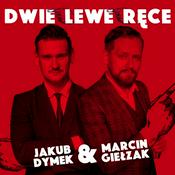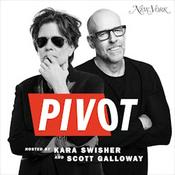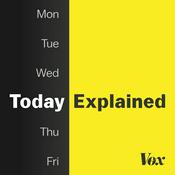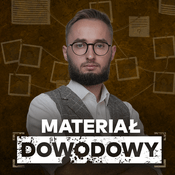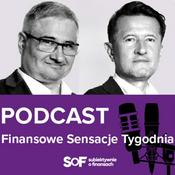Scrum Master Toolbox Podcast: Agile storytelling from the trenches

363 odcinków
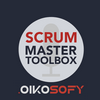
BONUS Breaking Through The Organizational Immune System | Vasco Duarte
25.12.2025 | 29 min.
BONUS: Breaking Through The Organizational Immune System - Why Software-Native Organizations Are Still Rare With Vasco Duarte In this BONUS episode, we explore the organizational barriers that prevent companies from becoming truly software-native. Despite having proof that agile, iterative approaches work at scale—from Spotify to Amazon to Etsy—most organizations still struggle to adopt these practices. We reveal the root cause behind this resistance and expose four critical barriers that form what we call "The Organizational Immune System." This isn't about resistance to change; it's about embedded structures, incentives, and mental models that actively reject beneficial transformation. The Root Cause: Project Management as an Incompatible Mindset "Project management as a mental model is fundamentally incompatible with software development. And will continue to be, because 'project management' as an art needs to support industries that are not software-native." The fundamental problem isn't about tools or practices—it's about how we think about work itself. Project management operates on assumptions that simply don't hold true for software development. It assumes you can know the scope upfront, plan everything in advance, and execute according to that plan. But software is fundamentally different. A significant portion of the work only becomes visible once you start building. You discover that the "simple" feature requires refactoring three other systems. You learn that users actually need something different than what they asked for. This isn't poor planning—it's the nature of software. Project management treats discovery as failure ("we missed requirements"), while software-native thinking treats discovery as progress ("we learned something critical"). As Vasco points out in his NoEstimates work, what project management calls "scope creep" should really be labeled "value discovery" in software—because we're discovering more value to add. Discovery vs. Execution: Why Software Needs Different Success Metrics "Software hypotheses need to be tested in hours or days, not weeks, and certainly not months. You can't wait until the end of a 12-month project to find out your core assumption was wrong." The timing mismatch between project management and software development creates fundamental problems. Project management optimizes for plan execution with feedback loops that are months or years long, with clear distinctions between teams doing requirements, design, building, and testing. But software needs to probe and validate assumptions in hours or days. Questions like "Will users actually use this feature?" or "Does this architecture handle the load?" can't wait for the end of a 12-month project. When we finally discover our core assumption was wrong, we need to fully replan—not just "change the plan." Software-native organizations optimize for learning speed, while project management optimizes for plan adherence. These are opposing and mutually exclusive definitions of success. The Language Gap: Why Software Needs Its Own Vocabulary "When you force software into project management language, you lose the ability to manage what actually matters. You end up tracking task completion while missing that you're building the wrong thing." The vocabulary we use shapes how we think about problems and solutions. Project management talks about tasks, milestones, percent complete, resource allocation, and critical path. Software needs to talk about user value, technical debt, architectural runway, learning velocity, deployment frequency, and lead time. These aren't just different words—they represent fundamentally different ways of thinking about work. When organizations force software teams to speak in project management terms, they lose the ability to discuss and manage what actually creates value in software development. The Scholarship Crisis: An Industry-Wide Knowledge Gap "Agile software development represents the first worldwide trend in scholarship around software delivery. But most organizational investment still goes into project management scholarship and training." There's extensive scholarship in IT, but almost none about delivery processes until recently. The agile movement represents the first major wave of people studying what actually works for building software, rather than adapting thinking from manufacturing or construction. Yet most organizational investment continues to flow into project management certifications like PMI and Prince2, and traditional MBA programs—all teaching an approach with fundamental problems when applied to software. This creates an industry-wide challenge: when CFOs, executives, and business partners all think in project management terms, they literally cannot understand why software needs to work differently. The mental model mismatch isn't just a team problem—it's affecting everyone in the organization and the broader industry. Budget Cycles: The Project Funding Trap "You commit to a scope at the start, when you know the least about what you need to build. The budget runs out exactly when you're starting to understand what users actually need." Project thinking drives project funding: organizations approve a fixed budget (say $2M over 9 months) to deliver specific features. This seems rational and gives finance predictability, but it's completely misaligned with how software creates value. Teams commit to scope when they know the least about what needs building. The budget expires just when they're starting to understand what users actually need. When the "project" ends, the team disbands, taking all their accumulated knowledge with them. Next year, the cycle starts over with a new project, new team, and zero retained context. Meanwhile, the software itself needs continuous evolution, but the funding structure treats it as a series of temporary initiatives with hard stops. The Alternative: Incremental Funding and Real-Time Signals "Instead of approving $2M for 9 months, approve smaller increments—maybe $200K for 6 weeks. Then decide whether to continue based on what you've learned." Software-native organizations fund teams working on products, not projects. This means incremental funding decisions based on learning rather than upfront commitments. Instead of detailed estimates that pretend to predict the future, they use lightweight signals from the NoEstimates approach to detect problems early: Are we delivering value regularly? Are we learning? Are users responding positively? These signals provide more useful information than any Gantt chart. Portfolio managers shift from being "task police" asking "are you on schedule?" to investment curators asking "are we seeing the value we expected? Should we invest more, pivot, or stop?" This mirrors how venture capital works—and software is inherently more like VC than construction. Amazon exemplifies this approach, giving teams continuous funding as long as they're delivering value and learning, with no arbitrary end date to the investment. The Business/IT Separation: A Structural Disaster "'The business' doesn't understand software—and often doesn't want to. They think in terms of features and deadlines, not capabilities and evolution." Project thinking reinforces organizational separation: "the business" defines requirements, "IT" implements them, and project managers coordinate the handoff. This seems logical with clear specialization and defined responsibilities. But it creates a disaster. The business writes requirements documents without understanding what's technically possible or what users actually need. IT receives them, estimates, and builds—but the requirements are usually wrong. By the time IT delivers, the business need has changed, or the software works but doesn't solve the real problem. Sometimes worst of all, it works exactly as specified but nobody wants it. This isn't a communication problem—it's a structural problem created by project thinking. Product Thinking: Starting with Behavior Change "Instead of 'build a new reporting dashboard,' the goal is 'reduce time finance team spends preparing monthly reports from 40 hours to 4 hours.'" Software-native organizations eliminate the business/IT separation by creating product teams focused on outcomes. Using approaches like Impact Mapping, they start with behavior change instead of features. The goal becomes a measurable change in business behavior or performance, not a list of requirements. Teams measure business outcomes, not task completion—tracking whether finance actually spends less time on reports. If the first version doesn't achieve that outcome, they iterate. The "requirement" isn't sacred; the outcome is. "Business" and "IT" collaborate on goals rather than handing off requirements. They're on the same team, working toward the same measurable outcome with no walls to throw things over. Spotify's squad model popularized this approach, with each squad including product managers, designers, and engineers all focused on the same part of the product, all owning the outcome together. Risk Management Theater: The Appearance of Control "Here's the real risk in software: delivering software that nobody wants, and having to maintain it forever." Project thinking creates elaborate risk management processes—steering committees, gate reviews, sign-offs, extensive documentation, and governance frameworks. These create the appearance of managing risk and make everyone feel professional and in control. But paradoxically, the very practices meant to manage risk end up increasing the risk of catastrophic failure. This mirrors Chesterton's Fence paradox. The real risk in software isn't about following the plan—it's delivering software nobody wants and having to maintain it forever. Every line of code becomes a maintenance burden. If it's not delivering value, you're paying the cost forever or paying additional cost to remove it later. Traditional risk management theater doesn't protect against this at all. Gates and approvals just slow you down without validating whether users will actually use what you're building or whether the software creates business value. Agile as Risk Management: Fast Learning Loops "Software-native organizations don't see 'governance' and 'agility' as a tradeoff. Agility IS governance. Fast learning loops ARE how you manage risk." Software-native organizations recognize that agile and product thinking ARE risk management. The fastest way to reduce risk is delivering quickly—getting software in front of real users in production with real data solving real problems, not in demos or staging environments. Teams validate expected value by measuring whether software achieves intended outcomes. Did finance really reduce their reporting time? Did users actually engage with the feature? When something isn't working, teams change it quickly. When it is working, they double down. Either way, they're managing risk through rapid learning. Eric Ries's Lean Startup methodology isn't just for startups—it's fundamentally a software-native management practice. Build-Measure-Learn isn't a nice-to-have; it's how you avoid the catastrophic risk of building the wrong thing. The Risk Management Contrast: Theater vs. Reality "Which approach actually manages risk? The second one validates assumptions quickly and cheaply. The first one maximizes your exposure to building the wrong thing." The contrast between approaches is stark. Risk management theater involves six months of requirements gathering and design, multiple approval gates that claim to prevent risk but actually accumulate it, comprehensive test plans, and a big-bang launch after 12 months. Teams then discover users don't want it—and now they're maintaining unwanted software forever. The agile risk management approach takes two weeks to build a minimal viable feature, ships to a subset of users, measures actual behavior, learns it's not quite right, iterates in another two weeks, validates value before scaling, and only maintains software that's proven valuable. The second approach validates assumptions quickly and cheaply. The first maximizes exposure to building the wrong thing. The Immune System in Action: How Barriers Reinforce Each Other "When you try to 'implement agile' without addressing these structural barriers, the organization's immune system rejects it. Teams might adopt standups and sprints, but nothing fundamental changes." These barriers work together as an immune system defending the status quo. It starts with the project management mindset—the fundamental belief that software is like construction, that we can plan it all upfront, that "done" is a meaningful state. That mindset creates funding models that allocate budgets to temporary projects instead of continuous products, organizational structures that separate "business" from "IT" and treat software as a cost center, and risk management theater that optimizes for appearing in control rather than actually learning. Each barrier reinforces the others. The funding model makes it hard to keep stable product teams. The business/IT separation makes it hard to validate value quickly. The risk theater slows down learning loops. The whole system resists change—even beneficial change—because each part depends on the others. This is why so many "agile transformations" fail: they treat the symptoms (team practices) without addressing the disease (organizational structures built on project thinking). Breaking Free: Seeing the System Clearly "Once you see the system clearly, you can transform it. You now know the root cause, how it manifests, and what the alternatives look like." Understanding these barriers is empowering. It's not that people are stupid or resistant to change—organizations have structural barriers built on a fundamental mental model mismatch. But once you see the system clearly, transformation becomes possible. You now understand the root cause (project management mindset), how it manifests in your organization (funding models, business/IT separation, risk theater), and what the alternatives look like through real examples from companies successfully operating as software-native organizations. The path forward requires addressing the disease, not just the symptoms—transforming the fundamental structures and mental models that shape how your organization approaches software. Recommended Further Reading Vasco's article on 5 examples of software disasters that show we are in the middle of another software crisis NoEstimates movement: Vasco Duarte's work and book Impact Mapping: Gojko Adzic's framework Lean Startup: Eric Ries, "The Lean Startup" Outcome-based funding model Spotify squad model: Henrik Kniberg's materials Chesterton's fence paradox About Vasco Duarte Vasco Duarte is a thought leader in the Agile space, co-founder of Agile Finland, and host of the Scrum Master Toolbox Podcast, which has over 10 million downloads. Author of NoEstimates: How To Measure Project Progress Without Estimating, Vasco is a sought-after speaker and consultant helping organizations embrace Agile practices to achieve business success. You can link with Vasco Duarte on LinkedIn.

BONUS: Recovering the Essence of Agile - What's Already Working With Vasco Duarte
24.12.2025 | 23 min.
Xmas Special: Recovering the Essence of Agile - What's Already Working in Software-Native Organizations In this BONUS Xmas Special episode, we explore what happens when we strip away the certifications and branded frameworks to recover the essential practices that make software development work. Building on Episode 2's exploration of the Project Management Trap, Vasco reveals how the core insights that sparked the Agile revolution remain valid - and how real organizations like Spotify, Amazon, and Etsy embody these principles to thrive in today's software-driven world. The answer isn't to invent something new; it's to amplify what's already working. Agile as an Idea, Not a Brand "The script (sold as the solution) will eventually kill the possibility of the conversation ever happening with any quality." We establish a parallel between good conversations and good software development. Just as creating "The Certified Conversational Method™" with prescribed frameworks and certification levels would miss the point of genuine dialogue, the commodification of agile into Agile™ has obscured its essential truth. The core idea was simple and powerful: build software in small increments, get it in front of real users quickly, learn from their actual behavior, adapt based on what you learn, and repeat continuously. This wasn't revolutionary - it was finally recognizing how software actually works. You can't know if your hypothesis about user needs is correct until users interact with it, so optimize for learning speed, not planning precision. But when the need to certify and validate "doing Agile right" took over, the idea got packaged, and often the package became more important than the principle. Four Fundamental Practices That Enable Living Software "Every deployment was a chance to see how users actually responded." Software-native organizations distinguish themselves through core practices that align with software as a living capability. In this episode, we review four critical ones: First, iterative delivery means shipping the smallest valuable increment possible and building on it - Etsy's transformation from quarterly releases in 2009 to shipping 50+ times per day by 2012 exemplifies this approach, where each small change serves as a learning opportunity. Second, tight feedback loops get software in front of real users as fast as possible, whether through paper prototypes or production deployments. Third, continuous improvement of the process itself creates meta-feedback loops, as demonstrated by Amazon's "You Build It, You Run It" principle introduced by Werner Vogels in 2006, where development teams running their own services in production learn rapidly to write more resilient code. Fourth, product thinking over project thinking organizes teams around long-lived products rather than temporary projects, allowing teams to develop deep expertise and become living capabilities themselves, accumulating knowledge and improving over time. Spotify's Evolutionary Approach "The Spotify model has nothing to do with Spotify really. It was just a snapshot of how that one company worked at the time." Spotify's journey reveals a critical insight often missed in discussions of their famous organizational model. Starting with standard Scrum methodology pre-2012, they adopted the squad model around 2012 with autonomous teams organized into tribes, documented in Henrik Kniberg and Anders Ivarsson's influential white paper (direct PDF link). But post-2016, internal staff and agile coaches noted that the "Spotify model" had become mythology, and the company had moved on from original concepts to address new challenges. As Kniberg himself later reflected, the model has taken on a life of its own, much like Lean's relationship to Toyota. The key insight isn't the specific structure - it's that Spotify treated their own organizational design as a living capability, continuously adapting based on what worked and what didn't rather than implementing "the model" and declaring victory. That's software-native thinking applied to organization design itself. Amazon's Two-Pizza Teams and Massive Scale "Amazon deploys code every 11.7 seconds on average. That's over 7,000 deployments per day across the organization." (see this YouTube video of this talk) Amazon's two-pizza team principle goes far deeper than team size. Teams small enough to be fed with two pizzas (roughly 6-10 people) gain crucial autonomy and ownership: each team owns specific services and APIs, makes their own technical decisions, runs their services in production, and manages inter-team dependencies through APIs rather than meetings. This structure enabled Amazon to scale massively while maintaining speed, as teams could iterate independently without coordinating with dozens of other teams. The staggering deployment frequency - over 7,000 times per day as of 2021 - is only possible with a software-native structure for the company itself, demonstrating that this isn't just about managing software delivery but touches everything, including how teams are organized. Why These Practices Work "These practices work because they align with what software actually is: a living, evolvable capability." The effectiveness of software-native approaches stems from their alignment with software's true nature. Traditional project approaches assume we can know requirements upfront, estimate accurately, build it right the first time, and reach a meaningful "done" state. Software-native approaches recognize that requirements emerge through interaction with users, estimation is less important than rapid learning, "right" is discovered iteratively rather than designed upfront, and "done" only happens when we stop evolving the software. When Etsy ships 50 times per day, they're optimizing for learning where each deployment is a hypothesis test. When Amazon's teams own services end-to-end, they're creating tight feedback loops where teams feel the pain of their own decisions directly. When Spotify continuously evolves their organizational model, they're treating their own structure as software that should adapt to changing needs. The Incomplete Picture and the Question of Universal Adoption "If these approaches work, why aren't they universal?" We're not trying to paint a unrealistically rosy picture - these organizations aren't perfect. Spotify has had well-documented challenges with their model, Amazon's culture has been criticized as demanding and sometimes brutal, and Etsy has gone through multiple strategic shifts. But what matters is that they're practicing software-native development at scale, and it's working well enough that they can compete and thrive. They're not following a playbook perfectly but embodying principles and adapting continuously. This raises the critical question that will be explored in the next episode: if these approaches work, why do so many organizations still operate in project mode, and why do "agile transformations" so often fail to deliver real change? Understanding the resistance - what we call The Organizational Immune System - is essential to overcoming it. References for Further Reading A book on the shift from "projects" to "products": "Project to Product" by Mik Kersten About Vasco Duarte Vasco Duarte is a thought leader in the Agile space, co-founder of Agile Finland, and host of the Scrum Master Toolbox Podcast, which has over 10 million downloads. Author of NoEstimates: How To Measure Project Progress Without Estimating, Vasco is a sought-after speaker and consultant helping organizations embrace Agile practices to achieve business success. You can link with Vasco Duarte on LinkedIn.

Xmas Special: Why project management tools fail software development - and what works instead!
23.12.2025 | 21 min.
Xmas Special: Why project management tools fail software development - and what works instead! In this BONUS episode, we dive deep into The Project Management Trap, continuing our exploration from Episode 1 where we established that software is societal infrastructure being managed with tools from the 1800s. We examine why project management frameworks - designed for building railroads and ships - are fundamentally misaligned with software development, and what happens when we treat living capabilities like construction projects with defined endpoints. The Origin Story - Where Project Management Came From "The problem isn't that project management is bad. The problem is that software isn't building a railroad or a building, or setting up a process that will run forever (like a factory)." Project management emerged from industries with hard physical constraints - building the Transcontinental Railroad in the 1860s, coordinating factory machinery, managing finite and expensive materials. The Gantt chart, invented in the 1910s for factory scheduling, worked brilliantly for coordinating massive undertakings with calculable physics, irreversible decisions, and clear completion points. When the rails met, you were done. When the bridge was built, the project ended. These tools gave us remarkable precision for building ships, bridges, factories, and highways. But software operates in a completely different reality - one where the raw materials are time and brainpower, not minerals and hardware, and where the transformation happens in unique creative moments rather than repeated mechanical movements. The Seductive Clarity Of Project Management Artifacts "In software, we almost never know either of those things with certainty." Project management is tempting for software leaders because it offers comforting certainty. Gantt charts show every task laid out, milestones mark clear progress, "percent complete" gives us a number, and a defined "done" promises relief. The typical software project kickoff breaks down into neat phases: requirements gathering (6 weeks), design (4 weeks), development (16 weeks), testing (4 weeks), deployment (2 weeks) - total 32 weeks, done by Q3. Leadership loves this. Finance can budget it. Everyone can plan around it. But this is false precision. Software isn't pouring concrete where you measure twice and pour once. Every line of code is a hypothesis about what users need and how the system should behave. That 32-week plan assumes we know exactly what to build and exactly how long each piece takes - assumptions that are almost never true in software development. The Completion Illusion "Software products succeed by evolving. Projects end; products adapt." "Done" is the wrong goal for living software. We expand on the Slack story from Episode 1 to illustrate this point. If Slack's team had thought in project terms in 2013, they might have built a functional tool with channels, direct messages, file sharing, and search - shipped on time and on budget by Q2 2014, project complete. But that wasn't the end; it was the beginning. Through continuous user feedback and evolution, Slack added threaded conversations (2017), audio/video calls (2016), workflow automation (2019), and Canvas for knowledge management (2023). Each wasn't maintenance or bug fixing - these were fundamental enhancements. Glass's research shows that 60% of maintenance costs are enhancements, not fixes. By 2021, when Salesforce acquired Slack for $27.7 billion, it bore little resemblance to the 2014 version. The value wasn't in that initial "project" - it was in the continuous evolution. If they'd thought "build it, ship it, done," Slack would have died competing against HipChat and Campfire. When Projects Succeed (Well, Some Do, Anyway) But Software Fails "They tried to succeed at project management. They ended up failing at both software delivery AND project management!" Vasco references his article "The Software Crisis is Real," examining five distinct cases from five different countries that represent what's wrong with project thinking for software. These projects tried hard to do everything right by project management standards: detailed requirements (thousands of pages), milestone tracking, contractor coordination, hitting fixed deadlines, and proper auditing. What they didn't have was iterative delivery to test with real users early, feedback loops to discover problems incrementally, adaptability to change based on learning, or a "living capability" mindset. Project thinking demanded: get all requirements right upfront (otherwise no funding), build it all, test at the end, launch on deadline. Software thinking demands: launch something minimal early, get real user feedback, iterate rapidly, evolve the capability. These projects succeeded at following project management rules but failed at delivering valuable software. What Software-Native Delivery Management Looks Like "Software is unpredictable not because we're bad at planning - it's unpredictable because we're creating novel solutions to complex problems, and in a completely different economic system." If not projects, then what? Vasco has been exploring this question for years, since publishing the NoEstimates book. The answer starts with thinking in products and capabilities, not projects - recognizing that products have ongoing evolution, capabilities are cultivated and improved rather than "delivered" and done, and value is measured in outcomes rather than task completion. Instead of comprehensive planning, we need iteration and constant decision-making based on validated hypotheses: start with "We believe users need X," run experiments by building small and testing with real users, then learn and adapt. Instead of fixed scope, define the problem (not the solution), allow the solution to evolve as you learn, and optimize for learning speed rather than task completion. The contrast is clear: project thinking says "We will build features A, B, C, D, and E by Q3, then we're done." Software-native thinking says "We're solving problem X for users. We'll start with the riskiest hypothesis, build a minimal version, ship it to 100 users next week, and learn whether we're on the right track." The appropriate response to software's inherent unpredictability isn't better planning - it's faster learning. References for Further Reading Vasco Duarte's article on the Software Leadership Workshop newsletter: "The Software Crisis is Real" Glass, Robert L. "Facts and Fallacies of Software Engineering" - Fact 42: "Enhancement is responsible for roughly 60 percent of software maintenance costs. Error correction is roughly 17 percent. Therefore, software maintenance is largely about adding new capability to old software, not fixing it." NoEstimates Book: How To Measure Project Progress Without Estimating Slack evolution timeline: Company history and feature releases The unexpected design challenge behind Slack's new threaded conversations Slack voice and video chat Slack launches admin workflow automation and announcement channels Meet Slack Canvas - Slack's answer to the knowledge management problem. About Vasco Duarte Vasco Duarte is a thought leader in the Agile space, co-founder of Agile Finland, and host of the Scrum Master Toolbox Podcast, which has over 10 million downloads. Author of NoEstimates: How To Measure Project Progress Without Estimating, Vasco is a sought-after speaker and consultant helping organizations embrace Agile practices to achieve business success. You can link with Vasco Duarte on LinkedIn.

Xmas Special: Software Industry Transformation - Why Software Development Must Mature With Vasco Duarte
22.12.2025 | 17 min.
Xmas Special: Software Industry Transformation - Why Software Development Must Mature Welcome to the 2025 Xmas special - a five-episode deep dive into how software as an industry needs to transform. In this opening episode, we explore the fundamental disconnect between how we manage software and what software actually is. From small businesses to global infrastructure, software has become the backbone of modern society, yet we continue to manage it with tools designed for building ships in the 1800s. This episode sets the stage for understanding why software development must evolve into a mature discipline. Software Runs Everything Now "Without any single piece, I couldn't operate - and I'm tiny. Scale this reality up: software isn't just in tech companies anymore." Even the smallest businesses today run entirely on software infrastructure. A small consulting and media business depends on WordPress for websites, Kajabi for courses, Stripe for payments, Quaderno for accounting, plus email, calendar, CRM systems, and AI assistants for content creation. The challenge? We're managing this critical infrastructure with tools designed for building physical structures with fixed requirements - an approach that fundamentally misunderstands what software is and how it evolves. This disconnect has to change. The Oscillation Between Technology and Process "AI amplifies our ability to create software, but doesn't solve the fundamental process problems of maintaining, evolving, and enhancing that software over its lifetime." Software improvement follows a predictable pattern: technology leaps forward, then processes must adapt to manage the new complexity. In the 1960s-70s, we moved from machine code to COBOL and Fortran, which was revolutionary but led to the "software crisis" when we couldn't manage the resulting complexity. This eventually drove us toward structured programming and object-oriented programming as process responses, which, in turn, resulted in technology changes! Today, AI tools like GitHub Copilot, ChatGPT, and Claude make writing code absurdly easy - but writing code was never the hard part. Robert Glass documents in "Facts and Fallacies of Software Engineering" that maintenance typically consumes between 40 and 80 percent of software costs, making "maintenance" probably the most important life cycle phase. We're overdue for a process evolution that addresses the real challenge: maintaining, evolving, and enhancing software over its lifetime. Software Creates An Expanding Possibility Space "If they'd treated it like a construction project ('ship v1.0 and we're done'), it would never have reached that value." Traditional project management assumes fixed scope, known solutions, and a definable "done" state. The Sydney Opera House exemplifies this: designed in 1957, completed in 1973, ten times over budget, with the architect resigning - but once built, it stands with "minimal" (compared to initial cost) maintenance. Software operates fundamentally differently. Slack started as an internal tool for a failed gaming company called Glitch in 2013. When the game failed, they noticed their communication tool was special and pivoted entirely. After launching in 2014, Slack continuously evolved based on user feedback: adding threads in 2017, calls in 2016, workflow builder in 2019, and Canvas in 2023. Each addition changed what was possible in organizational communication. In 2021, Salesforce acquired Slack for $27.7 billion precisely because it kept evolving with user needs. The key difference is that software creates possibility space that didn't exist before, and that space keeps expanding through continuous evolution. Software Is Societal Infrastructure "This wasn't a cyber attack - it was a software update gone wrong." Software has become essential societal infrastructure, not optional and not just for tech companies. In July 2024, a faulty software update from cybersecurity firm CrowdStrike crashed 8.5 million Windows computers globally. Airlines grounded flights, hospitals canceled surgeries, banks couldn't process transactions, and 911 services went down. The global cost exceeded $10 billion. This wasn't an attack - it was a routine update that failed catastrophically. AWS outages in 2021 and 2023 took down major portions of the internet, stopping Netflix, Disney+, Robinhood, and Ring doorbells from working. CloudFlare outages similarly cascaded across daily-use services. When software fails, society fails. We cannot keep managing something this critical with tools designed for building physical things with fixed requirements. Project management was brilliant for its era, but that era isn't this one. The Path Ahead: Four Critical Challenges "The software industry doesn't just need better tools - it needs to become a mature discipline." This five-episode series will address how we mature as an industry by facing four critical challenges: Episode 2: The Project Management Trap - Why we think in terms of projects, dates, scope, and "done" when software is never done, and how this mindset prevents us from treating software as a living capability Episode 3: What's Already Working - The better approaches we've already discovered, including iterative delivery, feedback loops, and continuous improvement, with real examples of companies doing this well Episode 4: The Organizational Immune System - Why better approaches aren't universal, how organizations unconsciously resist what would help them, and the hidden forces preventing adoption Episode 5: Software-Native Organizations - What it means to truly be a software-native organization, transforming how the business thinks, not just using agile on teams Software is too important to our society to keep getting it wrong. We have much of the knowledge we need - the challenge is adoption and evolution. Over the next four episodes, we'll build this case together, starting with understanding why we keep falling into the same trap. References For Further Reading Glass, Robert L. "Facts and Fallacies of Software Engineering" - Fact 41, page 115 CrowdStrike incident: https://en.wikipedia.org/wiki/2024_CrowdStrike_incident AWS outages: 2021 (Dec 7), 2023 (June 13), and November 2025 incidents CloudFlare outages: 2022 (June 21), and November 2025 major incident Slack history and Salesforce acquisition: https://en.wikipedia.org/wiki/Slack_(software) Sydney Opera House: https://en.wikipedia.org/wiki/Sydney_Opera_House About Vasco Duarte Vasco Duarte is a thought leader in the Agile space, co-founder of Agile Finland, and host of the Scrum Master Toolbox Podcast, which has over 10 million downloads. Author of NoEstimates: How To Measure Project Progress Without Estimating, Vasco is a sought-after speaker and consultant helping organizations embrace Agile practices to achieve business success. You can link with Vasco Duarte on LinkedIn.

From Spreadsheets to Discovery—Helping POs Make the Transition | Natalia Curusi
19.12.2025 | 17 min.
Natalia Curusi: From Spreadsheets to Discovery—Helping POs Make the Transition The Great Product Owner: Taking Ownership and Coaching the Team Forward Read the full Show Notes and search through the world's largest audio library on Agile and Scrum directly on the Scrum Master Toolbox Podcast website: http://bit.ly/SMTP_ShowNotes. "That person was not just a great product owner, but a great coach—he had excellent communication and stakeholder management skills, and he coached myself as a Scrum Master, showing me how product ownership should look like." - Natalia Curusi Natalia worked with a Product Owner who embodied everything the role should be. He didn't come from a technical background, but he possessed exceptional domain knowledge, outstanding communication skills, and stakeholder management expertise you rarely find in one person. What made him truly remarkable was that he coached everyone around him, including Natalia as the Scrum Master. He demonstrated full empowerment and ownership—making decisions himself rather than constantly escalating to higher management. When risks needed to be taken, he took them with courage and conviction. The team trusted him completely because he balanced business needs with team capacity, always understanding what they could realistically achieve. Over the past five years, this person has been promoted multiple times and now serves as a global director of product, still with the same company. When Natalia thinks about what great product ownership looks like, she thinks of him—someone who combined technical understanding with coaching ability, took genuine ownership of outcomes, and empowered the team through clear vision and decisive leadership. These are exactly the skills that are hardest to find in the market, yet when you find them, the impact is transformative for the entire organization. Self-reflection Question: Does your Product Owner take ownership and make decisions, or do they constantly escalate to higher management, preventing the team from moving forward with confidence? The Bad Product Owner: Assigned Without Training, Support, or Willingness "She was a great subject matter expert with deep domain knowledge, but the organization assigned her the product owner role without her willingness, without training, and while she was already 80% loaded with other responsibilities." - Natalia Curusi Natalia encountered a Product Owner anti-pattern that reveals a systemic organizational failure. The person was an exceptional subject matter expert with incredible domain knowledge, but when the organization decided to adopt Agile, they assigned her the PO role like sticking a label on a box—no training, no consent, no preparation. She was already working at 80% capacity on other responsibilities and had no understanding of what product ownership meant. Frustrated and overwhelmed, she approached the role from a command-and-control mindset. At the project start, she brought a massive spreadsheet of requirements, expecting the team to implement them sequentially. The team tried a different approach, wanting to understand problems before discussing solutions, but the PO surprised everyone by re-introducing the spreadsheet in a later meeting—a clear sign of misalignment and broken trust. Natalia, recognizing this was a battle she couldn't win without organizational support, chose to manage the relationship rather than create open conflict. She worked to mediate between the PO's spreadsheet approach and the team's need for discovery and iterative development. The real anti-pattern wasn't the individual—it was the organization assigning critical roles without providing training, time, or psychological safety. This situation illustrates why product ownership fails: not from bad people, but from bad systems that set people up to fail. Self-reflection Question: When you see a struggling Product Owner, are you addressing the individual's behavior or the systemic conditions that set them up to fail in the first place? [The Scrum Master Toolbox Podcast Recommends] 🔥In the ruthless world of fintech, success isn't just about innovation—it's about coaching!🔥 Angela thought she was just there to coach a team. But now, she's caught in the middle of a corporate espionage drama that could make or break the future of digital banking. Can she help the team regain their mojo and outwit their rivals, or will the competition crush their ambitions? As alliances shift and the pressure builds, one thing becomes clear: this isn't just about the product—it's about the people. 🚨 Will Angela's coaching be enough? Find out in Shift: From Product to People—the gripping story of high-stakes innovation and corporate intrigue. Buy Now on Amazon [The Scrum Master Toolbox Podcast Recommends] About Natalia Curusi With over 20 years in software delivery, Natalia Curusi is an expert in Agile Transformations, Delivery Optimisation, and Systems Thinking. As an Agile Coach at Endava, she leads Asia Pacific initiatives, driving business agility and continuous improvement while mentoring teams to build customer-centric, high-performing, and collaborative cultures. You can link with Natalia Curusi on LinkedIn. You can also follow Natalia on Twitter.
Więcej Wiadomości podcastów
Trendy w podcaście Wiadomości
O Scrum Master Toolbox Podcast: Agile storytelling from the trenches
Słuchaj Scrum Master Toolbox Podcast: Agile storytelling from the trenches, OSW - Ośrodek Studiów Wschodnich i wielu innych podcastów z całego świata dzięki aplikacji radio.pl

Uzyskaj bezpłatną aplikację radio.pl
- Stacje i podcasty do zakładek
- Strumieniuj przez Wi-Fi lub Bluetooth
- Obsługuje Carplay & Android Auto
- Jeszcze więcej funkcjonalności
Uzyskaj bezpłatną aplikację radio.pl
- Stacje i podcasty do zakładek
- Strumieniuj przez Wi-Fi lub Bluetooth
- Obsługuje Carplay & Android Auto
- Jeszcze więcej funkcjonalności


Scrum Master Toolbox Podcast: Agile storytelling from the trenches
pobierz aplikację,
zacznij słuchać.









